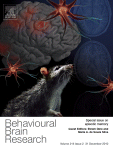The aim of the study was to investigate what the older adults themselves consider to be the reasons for their alcohol consumption.
The data were collected with a postal questionnaire from a random sample of 2100 elderly people (≥65 years) living in the medium-sized city of Espoo, Finland. The response rate was 71.6% from the community-dwelling sample. Altogether 868 persons responded that they use alcohol. Of them, 831 gave reasons for their drinking. We defined “at-risk users” as consuming >7 drinks per week, or ≥5 drinks on a typical drinking day, or using ≥3 drinks several times per week.
Main reasons given for alcohol consumption were “having fun or celebration” (58.7%), “for social reasons” (54.2%), “using alcohol for medicinal purposes” (20.1%), and “with meals” (13.8%).
Younger age groups reported more often than the older age groups that they use alcohol for “having fun or celebration” and “for social reasons.”
The older age groups used more often “alcohol for medicinal purposes”.
Men used alcohol more often than women “as pastime” or “as sauna drink”.
Those defined as “at-risk users” reported using alcohol because of “meaningless life,” for “relieving depression,” “relieving anxiety,” and “relieving loneliness.”
Younger age groups reported more often than the older age groups that they use alcohol for “having fun or celebration” and “for social reasons.”
The older age groups used more often “alcohol for medicinal purposes”.
Men used alcohol more often than women “as pastime” or “as sauna drink”.
Those defined as “at-risk users” reported using alcohol because of “meaningless life,” for “relieving depression,” “relieving anxiety,” and “relieving loneliness.”
Older adults have diverse alcohol consumption habits like people in other age groups. The oldest olds reported that they use alcohol for medicinal purposes. The “at-risk users” admit they use alcohol because of meaningless life, and relieving depression, anxiety, and loneliness.
Read Full Abstract
Request Reprint E-Mail: sirpa.immonen@espoo.fi
Read Full Abstract
Request Reprint E-Mail: sirpa.immonen@espoo.fi





















